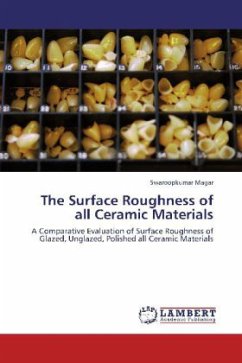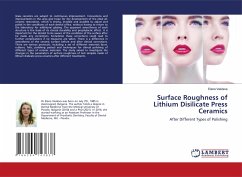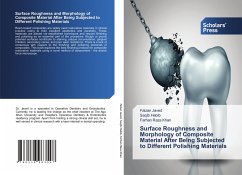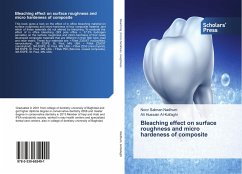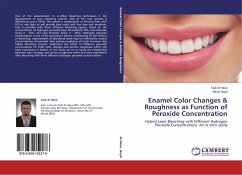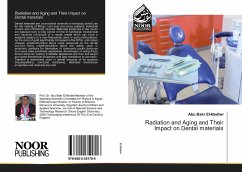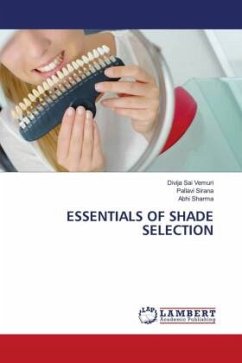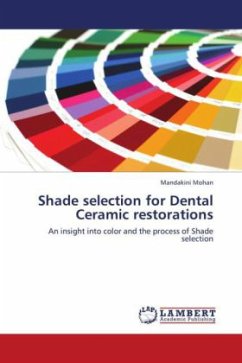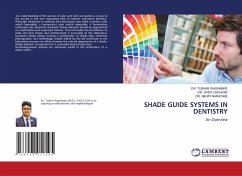
Toothbrushing on the Shade & Surface Roughness of Stained ceramic
Effect of toothbrushing on the shade & surface roughness of stanined ceramics
Versandkostenfrei!
Versandfertig in 6-10 Tagen
29,99 €
inkl. MwSt.

PAYBACK Punkte
15 °P sammeln!
Esthetically acceptable restorations have become more attainable due to the improvement in restorative materials.1 All-ceramic restorations are among the most esthetically pleasing substitutes for tooth structure due to their similar optical properties compared to natural dentition.2 Despite the esthetic qualities of all-ceramic materials, restorative dentists may have difficulty choosing the optimal shade for a restoration, because of individual differences in shade perception and the ability to match the natural dentition.3 Therefore, modifications with metallic oxide stains are often requir...
Esthetically acceptable restorations have become more attainable due to the improvement in restorative materials.1 All-ceramic restorations are among the most esthetically pleasing substitutes for tooth structure due to their similar optical properties compared to natural dentition.2 Despite the esthetic qualities of all-ceramic materials, restorative dentists may have difficulty choosing the optimal shade for a restoration, because of individual differences in shade perception and the ability to match the natural dentition.3 Therefore, modifications with metallic oxide stains are often required to correct slight shade imperfections when compared to adjacent natural teeth. This process is known as extrinsic staining.4Extrinsic staining is the superficial application of a stain to the outermost layer of a ceramic restoration. It is conventionally applied with a fine porcelain brush in order to recreate the special characteristics required to mimic a natural tooth.4, 5 A potential major drawback of this technique is that the layer of stain is thinly applied and is directly exposed to the oral environment.





